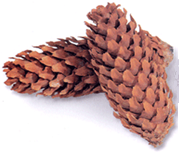Contact Anne Loeffler: aloeffler@grandriver.ca
Presentation Video:

We live in amazing times. I am reminded of this on a regular basis as I try to translate technical work being done by our photogrammetry analysts into information that will motivate farmers to adopt BMPs to protect water quality. This slide shows the desk of our GIS/Photogrammetry analyst at the GRCA. She has used SWOOP aerial imagery to develop a digital elevation model, and then uses a terrain analysis approach to create stream power indices, which indicate areas of high risk for gully erosion. Also, RUSLE-FAC was used to develop risk mapping predicting areas of high risk for sheet erosion. The gully erosion risk mapping and the sheet erosion risk mapping can then be layered to help GRCA, as a watershed management agency, identify priority areas for addressing sediment and nutrient loss issues.
So what would we like to do with this data?
- Sub-basin scale – where do we focus our efforts to control sediment and P losses?
- Small sub-watershed scale – within a sub-basin, where are the most important source areas? Our IT and water quality groups are currently working on the best way to answer this question.
- Farm scale – Which fields or farms are at highest risk for erosion and sediment losses to the watercourse?
- Most importantly, we’d like to use this information as a communication tool, as a way of motivating action
- We are running a pilot project to use the maps being created as extension tools in the Upper Nith watershed.
- So far, I’ve taken farm-scale maps out to the farms of eight farmers whom I have worked with in the past, to find out whether the gully mapping is reasonably accurate, and to see their response to this level of information. The farmers have been incredibly interested in how their farms are mapped, and they all immediately confirm the location of gullies on their land. Almost every farmer I’ve informally met with has identified areas where erosion control structures would make sense to him. This process, of the farmer identifying the area of concern and suggesting a solution, has an improved chance of resulting in the implementation of a project than if I had tried to convince him he had a problem and that I could tell him how to fix it.
- One of my experiences: I was showing farm maps to a very well-informed farmer, and as we looked over the maps he assured me he had taken steps to address all of the potential risk areas. After half an hour of discussion, he started thinking about addressing a water run through his farm. In his mind, it hadn’t been important. Seeing the maps was the catalyst to realizing that he could reconsider the severity of the issues on his farm.
- This mapping tool gives the farmer the opportunity to see the farm in a subwatershed context, or to look at the farm as a sediment source to the watershed. This was my big “aha” moment: A farmer rarely sees his/her farm in a watershed context. And why would he? These mapping techniques give us a tool to help them see their farms in terms of potential impacts, be they good or bad, on people and water bodies downstream, and we hope that, in combination with financial incentive programs, they will be a catalyst for action in terms of adoption of BMPs.




